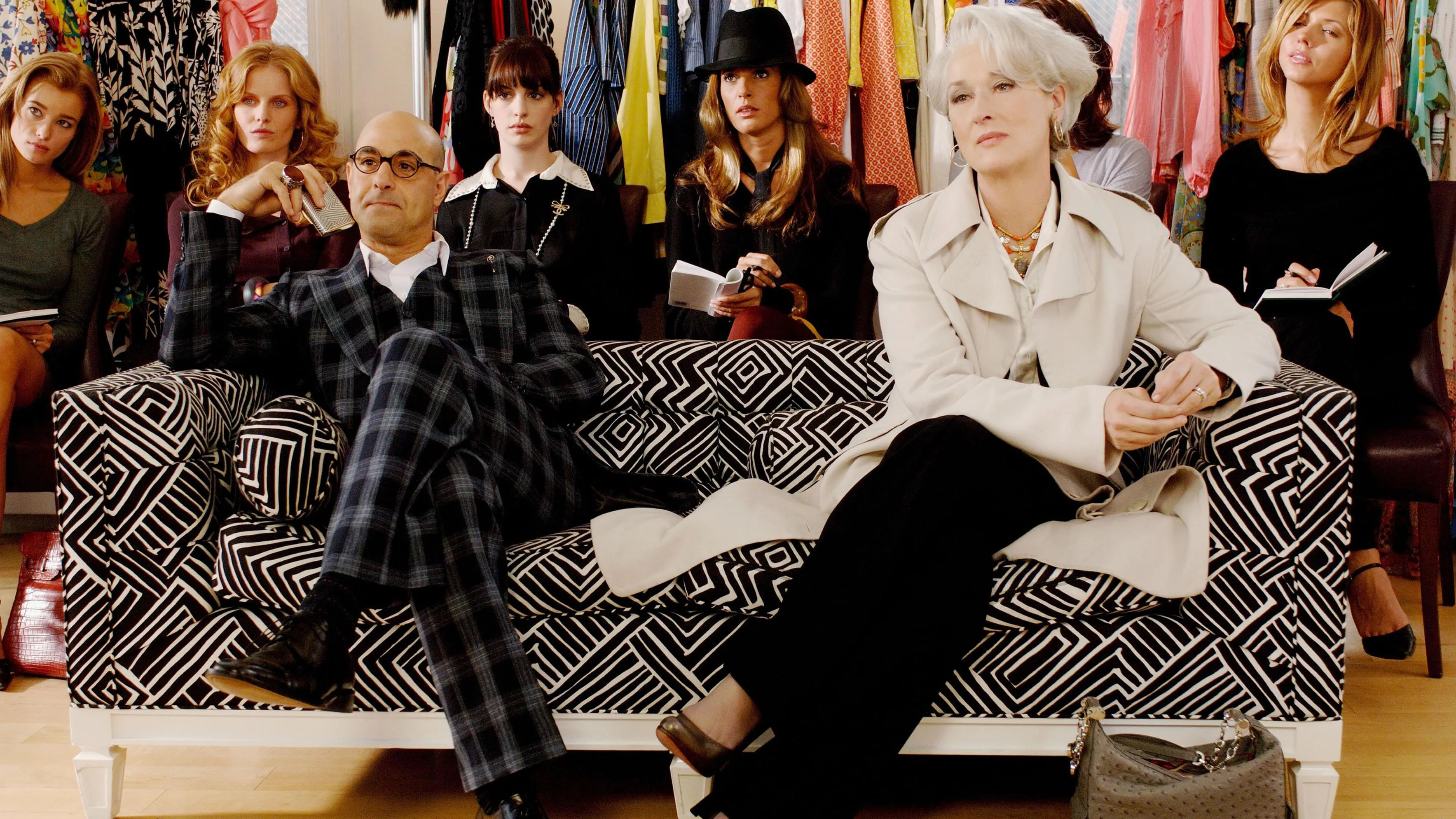How generational differences interfere within the fashion industry: A cinematic analysis.
- laravm2005
- Mar 25, 2024
- 5 min read
Updated: Mar 26, 2024
Generational differences are nothing new, especially in the fashion industry where, in my opinion, lies one of the most diverse age ranges in the workforce. While searching for relevant examples to sustain this post, I realized what better way to analyze such a niche topic than by using niche movies? Thus said, I decided to turn to none other but two iconic 2000s fashion movies: The Devil Wears Prada and 13 going on 30. Present in these two cinematographic pieces are pertinent instances where things such as generational differences have played a part in the fashion industry’s corporate workforce. In this blog post, I will be analyzing instances where these two movies have demonstrated the strength and hold generational differences sometimes have on the fashion industry’s staff.
Essentially, The Devil Wears Prada follows the story of Andy a recent college grad with no interest in fashion. She ends up landing one of the most sought-after jobs as an assistant for the demanding but genius editor in chief of Runway magazine, Miranda Priestly. The entire story line is strongly inspired by the current editor in chief of the American Vogue, Anna Wintour [pronounced Win-ter], who’s been subject to several rumors of having a short temperament for incompetence and ineffective individuals. While re-watching this 2006 classic, I came across several exemplifications of these age gap differences and how they might impact the office.
The first one worth mentioning is the iconic cerulean blue scene. As Andy is summoned into Miranda’s office, she gets caught chuckling at one of the stylists’ remarks about two cerulean blue belts looking so different while she saw them as utterly identical. Miranda proceeds to catch Andy in the act by asking “Something funny?” (23:00) Andy tried to defend herself by saying that those belts look the same to her but that she’s still learning about “this stuff”. Miranda then answers “This stuff? Oh, okay I see, you think this has nothing to do with you.” (23:19) She continues by scolding Andy on how the blue sweater she’s wearing that funny enough, is cerulean, is setting her aside from everyone else when in fact, it is directly linked to a 2002 Oscar De La Renta runway that showed cerulean blue gowns that Yves Saint-Laurent then took inspiration for military jackets. Then, cerulean was implemented in the collection of eight different designers. She continues by saying that this craze ultimately resulted in the color filtering down into department stores to the trickle down into “some tragic Casual Corner where you, (referring to Andy) no doubt, fished it out of some clearance bin.” (24:17)
Miranda concludes her tirade by saying “However, that blue represents millions of dollars and countless jobs, and it’s sort of comical how you think that you’ve made a choice that exempts you from the fashion industry, when, in fact, you’re wearing a sweater that was selected for you by the people in this room, from a pile of stuff.” (24:26) If you’re wondering how I will link this monologue back to my point on age gaps in the fashion industry, this is how: the older generation working in the industry is more acutely aware and knowledgeable of fashion’s past (seen when Miranda mentions Oscar De La Renta’s 2002 collection) unlike, the younger workers who, maybe not to Andy’s degree, don’t know every single little detail about the industry just yet since they are still new to the environment. Having different generations working in a sector like fashion is crucial for this specific reason.

Fig.1 The Devil Wears Prada's iconic cerulean blue scene.
Another movie that is crucial to understanding the importance of age gaps in the industry that is also a classic to fashion enthusiasts’ watchlist is 13 going on 30, a classic rom com with unusual circumstances. It’s the story of Jenna who just turned 13 and is feeling uneasy about it, as all 13-year-olds do. After getting caught by her mom when stuffing her bra with tissues, Jenna turns to a Poise magazine headlining “Thirty, Flirty, and Thriving”, all the things Jenna thought would make her satisfied unlike her 13-year-old self. But when she’s humiliated at her party by the mean girls, Jenna gives it no thought and wishes just that, to be thirty, flirty, and thriving. And not so lucky for her, it came true. Now in a 30-year old’s body, Jenna must adapt to her new life that coincidently happens to be at Poise magazine, till she can figure out how to reverse her wish.
Tying this film back to my initial statement regarding the importance of age gaps in the fashion industry offices, this movie is the prime example of how younger employees can truly offer a fresher take and younger approach to the office as opposed to the older staff’s sometimes run down ways of doing. The perfect scene to illustrate this statement is when Poise is hosting an event promoting the magazine however, the party’s vibe doesn’t take too long to die down resulting in many attendees leaving. Richard, Jenna’s boss, runs over to her begging for her to turn things around by using any means possible. 30-year-old looking but 13-year-old thinking Jenna’s first reflex was to go over to the DJ and asks him to play her favorite song: “Thriller” by Michael Jackson. She proceeds to perform the dance in the middle of the dance floor, but quickly spots a long-lost friend and invites him to dance. Soon enough, Jenna has the whole party dancing to thriller. Richard passes her while dancing and yells out: “I adore you!” (40:33) This faultlessly demonstrates how younger employees can be an asset in the office due to their fresher take and newer approach.
If it wasn’t for Jenna’s spontaneous and creative idea, that party would have ended sooner rather than later. It just goes to show that both younger and senior staff have a place in the fashion industry, despite having differences.

Fig.2 13 Going On 30's infamous "Thriller" dance scene.
Briefly, there is a significant importance to regrouping several generations of workers under the fashion industry’s corporate office’s roof. While the older staff be more knowledgeable on the industry’s past, what’s been done and what shouldn’t be, the younger staff offers a fresh take and more contemporary point of view. There shouldn’t be doubts on whether we should favor one over the other since all are valuable and contribute to the industry’s success.
Stay tuned, next week’s topic is: “How influencers are impacting the fashion industry’s senior staff’s understanding of social media’s importance.” And if you like what you’re reading, subscribe to Gen F for more!
To watch The Devil Wears Prada: Netflix, Disney +
To watch 13 going on 30: Prime Video






Comments